The door swung shut behind the dentist as she exited the room. Then, the x-ray machine clicked, capturing a photo of my mouth. When the dentist returned and removed the lead vest from my chest, she pulled up the picture on her monitor. The black and white photo showed the reason why my wisdom teeth hadn’t yet begun to erupt. Rather than growing straight upwards, they were angled horizontally, butting into my second molars. Unfortunately I am not alone; 24% of the world’s population experiences similar problems. Why is it that our wisdom teeth are so prone to this issue?
The views expressed in this article reflect those of the author, and not necessarily those of New Creation.
Brushing up on Dental Anatomy
Before we can answer this question, we need to brush up on our dental anatomy. Humans have four separate types of teeth. The purpose of all these different teeth is to break down our food into the smallest possible pieces so we can swallow and digest it easier.
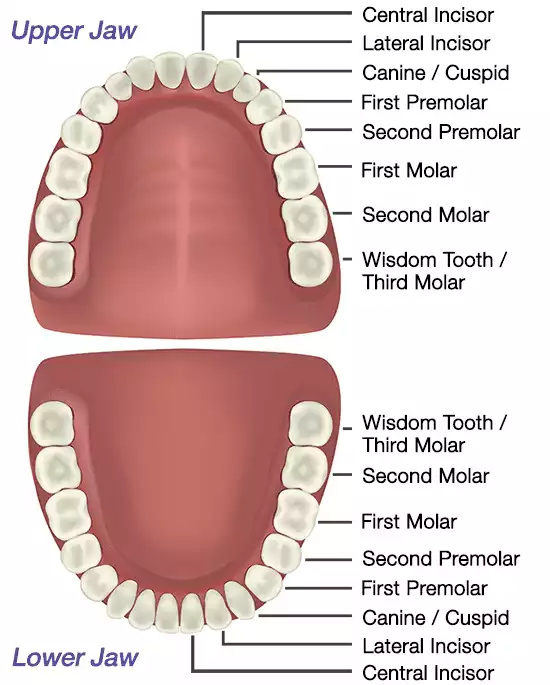
In the front of our mouth are incisors: slender, thin teeth. The incisors usually come into contact with food first. They chop food up into relatively large chunks which our other teeth will break down further. On either side of our incisors are canines. Canine teeth have a single sharp point to rip and shred food. Next come the premolars, teeth which have two cusps. The premolars on the top and bottom of our mouth fit together to dice food up further. Finally, in the back of our mouth are molars. Molars are large and have a flattened top with multiple small points. They grind food into tiny particles right before we swallow.
Our wisdom teeth are classified as molars because of their shape and placement. They are the third and final molar in the back of our mouth. This molar became associated with wisdom and maturity because it erupts so late, usually between one’s late teens and mid twenties. Unfortunately, along with maturity comes improper tooth eruption.
Statistics of Impaction
The frequency with which developmental problems impact our wisdom teeth is shocking. In many people, the third molar simply fails to form in a condition called agenesis. Affected people are missing one or more of their wisdom teeth. Scientists estimate that 22.6% of people are missing at least one wisdom tooth due to this condition.1 Having irregular tooth eruption, called impaction, is slightly more common. Approximately 24.4% of people have a third molar which has failed to erupt or has grown crooked.2 Both agenesis and impaction affect our wisdom teeth more frequently than they affect any of the other teeth in our mouth.
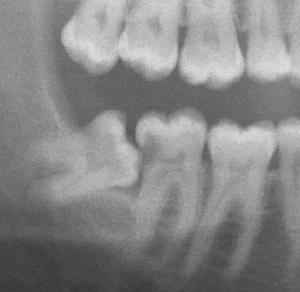
Wisdom tooth impaction can be linked to several anatomical factors, the most frequent being a lack of space.3 When the third molar finally pokes through the gum, all of the other teeth have already settled in place, and so it has to squeeze into a very specific slot. On the jaw or mandible, it needs to fit in between the second molar and the ascending ramus, the part of our jaw bone which attaches to the cranium. Our maxillary wisdom teeth, those on the top of our mouth, need to erupt right on the edge of our maxillary bone.
Impaction of the third molar is troublesome because it can cause so many problems. Impacted molars can push against other teeth causing pain and damage, and are also prone to infection. In light of this, it seems that impacted teeth must be a result of the Fall. In the “very good” world before mankind sinned, God would not have allowed creatures to suffer with impacted teeth. However, does this imply that God originally gave us mouths too small for all the teeth He created? Before the Fall, did He direct tooth eruption such that it happened flawlessly, even though the exact same anatomical arrangement would be problematic afterwards? Alternatively, have our mouths shortened since the Fall? To answer these questions we need to examine the facial variation of living people, and the human fossil record.
Clues From the Land Down Under
The frequency with which different populations experience third molar impaction varies. One of the highest known rates of wisdom tooth impaction is found in a group of Singaporean Chinese. In this population, 68% of individuals have at least one impacted third molar.2 On the other end of the impaction spectrum are the Indigenous Peoples of Australia, and certain African populations. Scientists estimate that only about 1% of these individuals have an impacted wisdom tooth.4 This variation is likely tied to facial length.
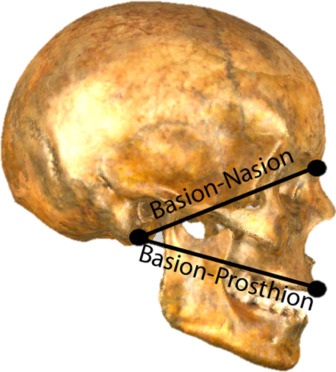
The length of the lower face varies from person to person. Some people have a jaw which juts out slightly farther than others. This feature is called facial prognathism. Scientists can quantify prognathism using the gnathic index. This involves measuring the distance between the front of the jaw and a specific site on the bottom of the skull, and comparing it to the distance between the top of the nose and the same site on the bottom of the skull. People with prognathic faces have a high gnathic index and a long mouth.
Intriguingly, the gnathic index is highest in the Aboriginal Peoples of Australia and Southern Africans.5 There seems to be a correlation between facial prognathism and the prevalence of third molar impaction. Having a longer face seems to provide extra space for your wisdom teeth. This trend carries over into the fossil record.
The Fossil Record of Impaction
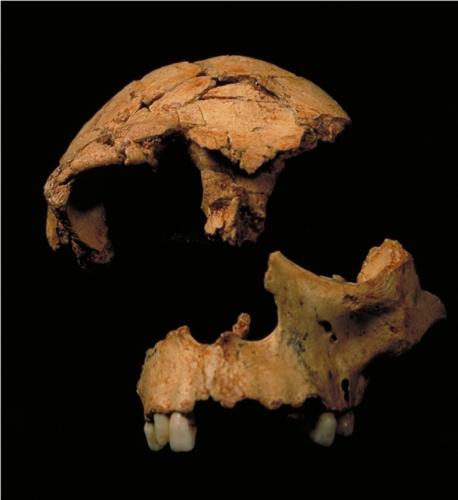
Throughout the entire human fossil record, there are only a few cases of wisdom tooth impaction. The earliest example comes from Atapuerca, Spain.6 Here, scientists uncovered the fossilized upper jaw and face of a child. ATD6-69, as this individual is known, probably lived soon after the Flood. Unfortunately, they were only about ten years old at the time of their death. This means that their wisdom teeth had not yet erupted. However, one of their wisdom teeth had developed crookedly. It is likely that had this individual not died so young, their third molar would have collided with their second, causing dental problems.
The few other cases of impaction come from Neanderthals. Overall, the rarity of this condition among early people is striking, and is probably attributable to their very prognathic faces. It seems that the length of the lower face has decreased over time in humans. Facial shortening within recent populations is probably the culprit behind my impacted wisdom teeth.
The Root of the Problem
God originally created Adam and Eve as herbivores. In Genesis 2:16, He told them that: “You may eat freely from every tree of the garden…” However, the Bible says that a major dietary shift occurred following the Flood. In Genesis 9:3 God told Noah and his family that: “Every moving thing that lives shall be food for you. And as I gave you the green plants, I give you everything.” This dietary change may have important ramifications for interpretation of the human fossil record.
The very earliest human fossils are those of small brained people. This may be because the brain is a very costly organ to maintain. With a vegetarian diet, humans may not have been able to sustain a large brain. However, after people were given permission to eat animals, they were allowed to take advantage of a wide variety of new food sources. With more nutrition available, humans could energetically afford to grow and maintain larger brains. As brain sized increased, the jaw did not expand proportionally, and became less powerful. Over time, humans further developed cooking and other processes to break down the nutrients in their food, making it softer and easier to digest. With softer food available, selection did not benefit those with a larger and stronger jaw.
As people began to process their food with greater frequency, they placed less stress on their facial bones. This change in diet may have played a role in the decrease of facial prognathism. This is because stress on the facial bones is known to be a factor which promotes facial growth in some mammals.7 As humans lost facial prognathism, the mouth became crowded with teeth, and the rates of third molar impaction increased. Diet may also explain why certain populations like Aboriginal Australians have such low rates of impaction. The British began heavily processing their food long before they occupied Australia. In contrast, the Aboriginal Peoples had a relatively “primitive” and tough diet. This likely influenced the continuing disparity between the populations in terms of the gnathic index and wisdom tooth impaction.
Conclusion
Our wisdom teeth tell a story, the tale of how our ancestors and their diet changed the human body through time. Unfortunately, we got the short end of the jaw, being the ones most affected by impaction. Thankfully, treatment and removal of impacted teeth is now much easier than it ever has been. This story illustrates how the Fall corrupted God’s perfect design. However, we can look to the promise of a new creation in which our bodies and even our wisdom teeth will be made new.
Footnotes
- Carter, K., Worthington, S. 2015. Morphologic and Demographic Predictors of Third Molar Agenesis: A Systematic Review and Meta-analysis. Journal of Dental Research, Vol. 94, Issue 7, pg. 886-894. ↩︎
- Carter, K., Worthington, S. 2016. Predictors of Third Molar Impaction: A Systematic Review and Meta-analysis. Journal of Dental Research, Vol. 95, Issue 3, pg. 267-276. ↩︎
- Divya, T., Thermozhi, S. 2014. Third molar impaction – A review. Journal of Pharmaceutical Sciences and Research, Vol. 6, Issue 11, pg. 363-367. ↩︎
- Hattab, F., Rawashdeh, M., Fahmy, M. 1995. Impaction status of third molars in Jordanian students. Oral Surgery, Oral Medicine, Oral Pathology, Oral Radiology, and Endodontology, Vol. 79, Issue 1, pg. 24-29. ↩︎
- Hanihara, T. 2000. Frontal and facial flatness of major human populations. American Journal of Biological Anthropology, Vol. 111, Issue 1, pg. 105-134. ↩︎
- Martín-Francés, L., Martinón-Torres, M., Martínez de Pinillos, M., Bayle, P., Fernández-Colón, P., García-Campos, C., Modesto-Mata, M., Carbonell, E., Arsuaga, J., Bermúdez de Castro, J. 2020. Ectopic maxillary third molar in Early Pleistocene Homo antecessor from Atapuerca-Gran Dolina site (Burgos, Spain). American Journal of Biological Anthropology, Vol. 171, pg. 733-741. ↩︎
- Lieberman, D., Krovitz, G., Yates, F., Devlin, M., St. Claire, M. 2004. Effects of food processing on masticatory strain and craniofacial growth in a retrognathic face. Journal of Human Evolution, Vol. 46, Issue 6, pg. 655-677. ↩︎




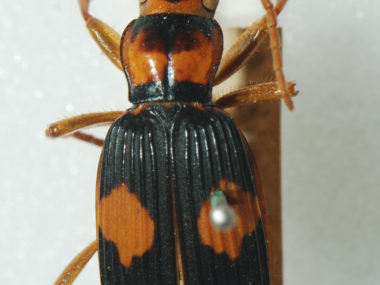


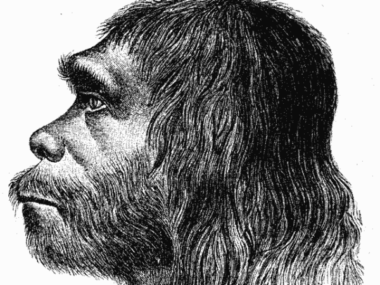




i agree wisdom teeth are a result of a post flood reaction to newly eating meat. I don’t agree that we had smaller brains or brains at all. instead I say we just have a memory machine called in the bible the mind. anyways the teeth reshaped the jaw etc etc originally. since then smaller types of people or with less vigourous eating habits will tend to have more wisdom teeth problems. I giess it should not materr about the sex of the person but yes about the people group.
God did not create wisdom teeth or maybe they just were there but morpged a lot. Its a good clue to biblical truth about human origins.
was that a true account that started the article??
Very interesting and well written article. Just one issue. You stated that, “With a vegetarian diet, humans may not have been able to sustain a large brain.” I must admit I’m a little uncomfortable with that assumption. It suggests that God intended man to have a small brain and, later after the Flood, it was the sin factor that “grew” our present-day brain sizes. I’m sure that what not at all intended, but when we write articles about the creation of man, a bit more discretion should go into the editing process. This is not a criticism of the author. As I stated, it’s certainly an interesting article. But a small discretionary sentence like the one I cite can lead to questions about the wisdom of God and His creations.
I think Peter was referring to the fact that brain size is smaller than average in some of the early human fossils, although still within the overall human range for brain size. But we now know that if a plant-based diet is balanced, it is an extremely health diet even for today, so I don’t think we should conclude that the Edenic diet was harmful. God would not have given something harmful to Adam and Eve. But brain organization is actually much more important for intelligence than brain size. In fact, Albert Einstein had a small brain that was in the upper brain size range for Homo erectus, so I don’t that we can conclude very much about variation in brain size. It could even be that those early H erectus brains were more potent because the neurons were closer together, which seems to have been the case with Einstein’s brain.